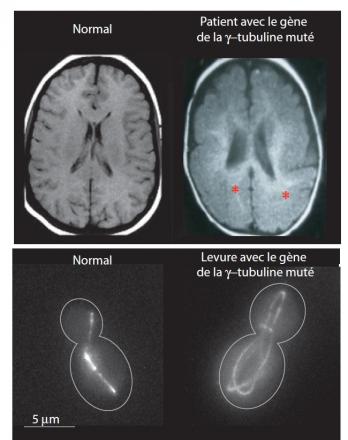Thanks to progress in imaging, scientists understand more and more the
anatomical abnormalities responsible for mental disabilities.
Malformations of the cortex and impaired neuronal communication are particularly
implicated. However, much remains to be accomplished in order to comprehend the
origin of these disruptions. Biologists from the Institut Cochin have
investigated a lead, the tubulin in neuronal cells (this protein
constitutes microtubules present in the cytoskeleton of cells). This tubulin
indeed proves to be mutated in patients with this condition. By what mechanisms
does this mutation generate cortical malformations? To find out,
researchers from the CEA-IRTSV reproduced the tubulin mutations present in sick
people in the yeast Saccharomyces cerevisiae. The tubulin of this
microorganism is in fact 75% identical to that of humans! Video-microscopy
observations were then used to identify the effect of mutations on the cell
cytoskeleton. The latter reorganizes completely with drastic changes in the
number and length of microtubules, namely its constituent fibers. In addition,
the magnitude of this reorganization appears to correlate with the severity of
the disease in humans. This novel approach opens new perspectives to better
understand the causes of mental disability and, ultimately, to find leads in
early diagnosis.

Top: left, MRI radiological appearance of a normal brain.
Right, a brain showing tubulin mutation. The cortical folds are thick,
with an absence of grooves, and an anterior gyrus that is not very well
marked. Bottom: microscopy of microtubules in yeast cells. Left, a
normal cell. Right, cells in which the tubulin is mutated. Microtubules
are more numerous and longer, and have lost their organization.